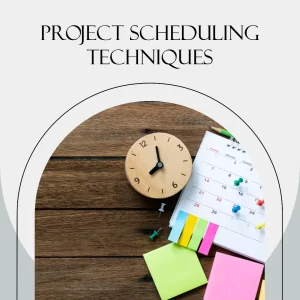Introduction
Project management reviews serve as critical checkpoints that assess the progress, performance, and overall health of a project. These reviews are structured evaluations that allow project managers to reflect on the project’s trajectory, identify areas for improvement, and ensure alignment with strategic goals. They typically involve a comprehensive analysis of project deliverables, timelines, budgets, and resource allocation, providing a holistic view of the project’s status.
Stakeholders play a pivotal role in the success of any project. They encompass a diverse group of individuals and organizations that have an interest in the project’s outcome, including clients, team members, sponsors, and end-users. Understanding their needs, expectations, and concerns is essential for project managers, as these insights can significantly influence project direction and success. Engaging stakeholders throughout the project lifecycle fosters collaboration and ensures that their perspectives are considered, ultimately leading to more informed decision-making.
Integrating stakeholder feedback into project management reviews is not just beneficial; it is essential. By actively collecting and analyzing feedback, project managers can gain valuable insights that inform project adjustments and enhancements. This process not only helps in identifying critical issues early on but also aligns project objectives with stakeholder expectations, thereby increasing the likelihood of project success. Moreover, incorporating stakeholder perspectives fosters a sense of ownership and commitment among stakeholders, enhancing their engagement and support for the project.
Understanding Stakeholder Feedback
Stakeholder feedback is a critical component that can significantly influence project outcomes. It encompasses various types of insights that stakeholders provide, which can be categorized into three main types:
- Positive Feedback: This type of feedback highlights what is working well within the project. It reinforces successful strategies and practices, providing motivation and validation to the project team. Recognizing positive feedback can help in maintaining momentum and morale among team members and stakeholders alike.
- Negative Feedback: Negative feedback points out areas of concern or dissatisfaction. While it may seem discouraging, it is essential for identifying potential pitfalls and challenges that need to be addressed. Acknowledging negative feedback allows project managers to pivot strategies and mitigate risks before they escalate into larger issues.
- Constructive Feedback: This feedback is particularly valuable as it not only identifies problems but also offers suggestions for improvement. Constructive feedback encourages a collaborative approach to problem-solving, fostering an environment where stakeholders feel their opinions are valued and considered in decision-making processes.
Sources of Feedback
Gathering stakeholder feedback can be achieved through various methods, each offering unique insights:
- Surveys: These are effective tools for collecting quantitative and qualitative data from a broad audience. Surveys can be designed to gauge stakeholder satisfaction, gather opinions on specific aspects of the project, and identify areas for improvement.
- Interviews: Conducting one-on-one or group interviews allows for deeper exploration of stakeholder perspectives. This method facilitates open dialogue, enabling project managers to ask follow-up questions and clarify responses, leading to richer insights.
- Meetings: Regularly scheduled meetings provide a platform for stakeholders to voice their thoughts and concerns in real-time. These interactions can foster a sense of community and collaboration, encouraging stakeholders to engage actively in the project’s progress.
The Impact of Feedback on Project Outcomes
The integration of stakeholder feedback into project management reviews can have profound effects on project success:
- Enhanced Decision-Making: By incorporating diverse insights, project managers can make more informed decisions that align with stakeholder expectations and needs. This alignment can lead to improved project outcomes and stakeholder satisfaction.
- Increased Trust and Engagement: Actively seeking and responding to feedback cultivates an atmosphere of trust. Stakeholders are more likely to feel valued and engaged when they see their input influencing project decisions, which can lead to stronger collaboration and support.
- Continuous Improvement: Feedback serves as a vital tool for continuous improvement. By regularly reviewing stakeholder insights, project managers can adapt strategies and processes, ensuring that the project remains responsive to changing needs and conditions.
Methods for Gathering Stakeholder Feedback
Integrating stakeholder feedback into project management reviews is crucial for enhancing project outcomes and ensuring alignment with stakeholder expectations. Here are some practical strategies for effectively collecting insights from stakeholders:
1. Surveys and Questionnaires
Surveys and questionnaires are powerful tools for gathering quantitative and qualitative data from stakeholders. Here are some design tips and best practices to consider:
- Keep it concise: Limit the number of questions to encourage participation and ensure that respondents remain engaged throughout the survey [2].
- Use clear language: Avoid jargon and complex terminology to ensure that all stakeholders can understand the questions [2].
- Incorporate a mix of question types: Use a combination of multiple-choice, rating scales, and open-ended questions to gather diverse insights [6].
- Pilot your survey: Test the survey with a small group before full deployment to identify any confusing questions or technical issues [6].
2. One-on-One Interviews
Conducting one-on-one interviews allows for in-depth discussions and personalized feedback. Here are some tips for effective sessions:
- Prepare open-ended questions: Craft questions that encourage stakeholders to share their thoughts and experiences in detail [4].
- Create a comfortable environment: Ensure that the setting is conducive to open dialogue, making stakeholders feel at ease to express their opinions [4].
- Listen actively: Show genuine interest in the responses, and ask follow-up questions to delve deeper into specific topics [4].
- Document insights: Take detailed notes or record the sessions (with permission) to capture valuable feedback for later analysis [4].
3. Focus Groups
Focus groups can foster open discussions among stakeholders, providing a platform for collaborative feedback. To facilitate effective focus groups:
- Select a diverse group: Include stakeholders from various backgrounds and roles to gather a wide range of perspectives [5].
- Establish ground rules: Set clear guidelines for discussion to ensure that all participants feel respected and heard [5].
- Encourage participation: Use techniques such as round-robin questioning to ensure that everyone has an opportunity to contribute [5].
- Moderate effectively: A skilled moderator can guide the conversation, keeping it on track while allowing for organic discussion [5].
4. Utilizing Digital Tools for Feedback Collection
Digital tools can streamline the feedback collection process, making it easier to gather and analyze stakeholder insights. Consider the following options:
- Online survey platforms: Use tools like SurveyMonkey or Google Forms to create and distribute surveys efficiently [6].
- Collaboration software: Platforms like Slack or Microsoft Teams can facilitate ongoing discussions and feedback sharing among stakeholders [6].
- Feedback management systems: Implement specialized software that allows for the collection, tracking, and analysis of stakeholder feedback in one place [6].
- Data visualization tools: Use tools like Tableau or Power BI to present feedback data in an easily digestible format, helping stakeholders understand trends and insights [6].
By employing these methods, project managers can effectively gather and utilize stakeholder insights during evaluations, ultimately leading to more successful project outcomes and stronger stakeholder relationships.
Analyzing Stakeholder Feedback
Integrating stakeholder feedback into project management reviews is crucial for ensuring project success and alignment with stakeholder expectations. This section will guide project managers on how to effectively evaluate and interpret feedback, focusing on key aspects such as categorizing feedback, analyzing quantitative and qualitative data, and utilizing various tools and techniques.
Categorizing Feedback: Themes and Trends
To make sense of the feedback received from stakeholders, it is essential to categorize it into identifiable themes and trends. This process involves:
- Identifying Common Themes: By reviewing feedback, project managers can pinpoint recurring issues or suggestions that stakeholders mention. This helps in understanding the areas that require attention or improvement.
- Trend Analysis: Tracking feedback over time can reveal trends that indicate whether stakeholder satisfaction is improving or declining. This can be done through regular feedback sessions or surveys, allowing project managers to adjust strategies accordingly [3][7].
Quantitative vs. Qualitative Analysis
Understanding the difference between quantitative and qualitative feedback is vital for a comprehensive evaluation:
- Quantitative Analysis: This involves analyzing numerical data collected through surveys or questionnaires. Metrics such as satisfaction scores or response rates can provide a clear picture of stakeholder sentiment. For instance, using statistical methods to interpret survey results can help in making data-driven decisions [2][4].
- Qualitative Analysis: This focuses on the insights gathered from open-ended feedback, interviews, or discussions. Analyzing qualitative data requires a more subjective approach, where project managers look for patterns in comments and suggestions. Techniques such as thematic analysis can be employed to extract meaningful insights from qualitative data [2][5].
Tools and Techniques for Analysis
Several tools and techniques can enhance the analysis of stakeholder feedback, enabling project managers to derive actionable insights:
- SWOT Analysis: This strategic planning tool helps in identifying the Strengths, Weaknesses, Opportunities, and Threats related to stakeholder feedback. By mapping feedback against these categories, project managers can prioritize areas for improvement and leverage strengths [1][6].
- Root Cause Analysis: This technique is useful for identifying the underlying causes of issues raised by stakeholders. By systematically investigating the reasons behind negative feedback, project managers can implement targeted solutions that address the root problems rather than just the symptoms [4][6].
- Feedback Sessions: Regularly scheduled feedback sessions can facilitate ongoing dialogue with stakeholders, allowing for real-time insights and adjustments. These sessions can be structured to encourage open communication and ensure that all voices are heard [7][8].
Incorporating Feedback into Project Management Reviews
Integrating stakeholder feedback into project management reviews is essential for ensuring that projects align with both organizational goals and stakeholder expectations. Here are key strategies for effectively gathering and utilizing stakeholder insights during evaluations:
Aligning Feedback with Project Goals and Metrics
- Regular Review and Update: It is crucial to regularly review and update your stakeholder assessment to adapt to changes and ensure alignment with project goals. This ongoing process helps in understanding how stakeholder needs evolve over time and how they relate to the project’s objectives [1].
- Utilization of Prioritization Matrices: Employing tools like prioritization matrices can help visualize stakeholder feedback in relation to project goals. These matrices, typically organized into two-by-two grids, allow project managers to categorize feedback based on its relevance and impact, making it easier to align insights with project metrics [2].
Developing Action Plans Based on Insights
- Leveraging Feedback Tools: Utilize various feedback tools such as surveys, user testing, and direct communication platforms to gather diverse insights from stakeholders. This approach not only enriches the feedback pool but also ensures that the insights are comprehensive and actionable [3].
- Identifying Critical Issues: Once feedback is collected, prioritize actions by identifying critical issues that need immediate attention. This step is vital for developing effective action plans that address the most pressing concerns raised by stakeholders [5].
Communicating Findings to the Team and Stakeholders
- Engagement and Transparency: Engage stakeholders directly by communicating challenges and collaboratively exploring alternative solutions. Establishing clear accountability in this process fosters trust and encourages open dialogue, which is essential for project success [4][6].
- Sharing Results: After analyzing the feedback and implementing changes, it is important to communicate how stakeholder insights have influenced project decisions. This transparency not only reinforces the value of stakeholder contributions but also enhances the overall project management process [5].
By effectively incorporating stakeholder feedback into project management reviews, project managers can ensure that evaluations are not only reflective of project performance but also responsive to the needs and expectations of all stakeholders involved. This approach ultimately leads to more successful project outcomes and stronger stakeholder relationships.
Best Practices for Continuous Stakeholder Engagement
Integrating stakeholder feedback into project management reviews is essential for ensuring that projects meet their objectives and align with stakeholder expectations. Here are some best practices to foster continuous engagement and effectively gather insights throughout the project lifecycle:
- Establish Regular Check-Ins and Updates: Schedule consistent meetings or updates with stakeholders to discuss project progress, challenges, and any changes in scope. This not only keeps stakeholders informed but also provides them with opportunities to voice their opinions and concerns. Regular interactions help in building trust and ensuring that stakeholders feel valued and involved in the project [1][6].
- Create a Culture of Open Communication: Encourage an environment where stakeholders feel comfortable sharing their thoughts and feedback. This can be achieved by actively listening to their concerns and demonstrating a genuine interest in addressing them. Utilizing various communication channels, such as emails, project management tools, or messaging platforms like Slack or Microsoft Teams, can facilitate this open dialogue [3][4]. Establishing clear rules of engagement and streamlined feedback processes can also enhance communication effectiveness [8].
- Utilize Stakeholder Feedback for Future Project Iterations: Collecting and analyzing feedback is crucial for continuous improvement. Implementing a prioritization matrix can help visualize and assess the feedback received, allowing project managers to make informed decisions about which insights to incorporate into future project phases [5]. Additionally, documenting insights in a knowledge repository fosters a culture of learning and ensures that valuable feedback is not lost but rather integrated into ongoing project management practices [7].
By adopting these best practices, project managers and stakeholder engagement specialists can enhance collaboration, ensure that stakeholder insights are effectively utilized, and ultimately drive project success. Engaging stakeholders throughout the project lifecycle not only improves project outcomes but also strengthens relationships and builds a foundation for future collaborations.
Case Studies: Successful Integration of Stakeholder Feedback
Integrating stakeholder feedback into project management reviews is essential for enhancing project outcomes and ensuring that the needs of all parties are met. Below are two real-world examples that illustrate effective stakeholder feedback integration, along with the lessons learned from each case.
Example 1: Urban Construction Project
Overview of the Project:
A construction project in an urban area aimed to develop a community center. The project team engaged with local residents, businesses, and government officials from the outset to gather insights and expectations.
Feedback Collected:
Stakeholder feedback was collected through surveys, community meetings, and one-on-one interviews. Key concerns included traffic management, environmental impact, and the types of facilities desired in the community center.
Outcomes:
The project team utilized the feedback to adjust the project scope, leading to the inclusion of additional green spaces and improved traffic flow designs. As a result, the project not only met the community’s needs but also received positive media coverage and increased local support, which facilitated smoother project execution [6][9].
Example 2: IT System Implementation
Overview of the Project:
An organization undertook an IT system implementation project aimed at improving internal communication and data management. The project faced initial resistance from employees who were concerned about the changes.
Challenges Faced:
The primary challenge was the lack of buy-in from key stakeholders, which led to delays and frustration among team members. Feedback was initially limited, and the project team struggled to understand the root causes of resistance.
How Feedback Improved the Process:
To address these challenges, the project team established regular feedback loops through workshops and focus groups. This allowed stakeholders to voice their concerns and suggest improvements. The feedback revealed that additional training and support were necessary for a smoother transition.
Outcomes:
By implementing the suggested changes, including enhanced training programs and ongoing support, the project team was able to increase stakeholder engagement and satisfaction. The project ultimately succeeded in its goals, with a notable increase in productivity and morale among employees [3][8].
Lessons Learned
- Early Engagement is Key: Engaging stakeholders early in the project lifecycle can help identify potential issues and align project goals with stakeholder expectations. This proactive approach can lead to smoother project execution and greater support from the community [1][4].
- Establish Transparent Communication Channels: Creating open lines of communication fosters trust and encourages stakeholders to share their insights. Regular updates and feedback sessions can help keep stakeholders informed and involved throughout the project [2][8].
- Adaptability is Crucial: Being open to feedback and willing to make adjustments based on stakeholder input can significantly enhance project outcomes. Flexibility in project planning allows teams to respond effectively to changing needs and concerns [5][7].
- Document and Analyze Feedback: Systematically collecting and analyzing stakeholder feedback can provide valuable insights that inform project decisions. Utilizing tools and methodologies for feedback analysis can improve the efficiency of this process [6][7].
By learning from these case studies, project managers and stakeholder engagement specialists can better integrate stakeholder feedback into their project management reviews, ultimately leading to more successful project outcomes.
Conclusion
Stakeholder feedback into project reviews is not just beneficial; it is essential for the success and sustainability of any project. Throughout this discussion, we have highlighted several key points regarding the importance of stakeholder insights:
- Enhanced Communication: A well-managed feedback process fosters better communication between stakeholder groups, breaking down silos that often hinder project progress [10]. This open dialogue allows project managers to understand the diverse needs and expectations of stakeholders, which is crucial for shaping project strategies effectively [12].
- Improved Alignment and Expectations: By actively seeking and incorporating stakeholder feedback, project managers can better align project objectives with stakeholder expectations. This alignment is vital for ensuring that the project meets its intended goals and delivers value to all parties involved [11].
- Identification of Process Improvements: Stakeholder feedback can reveal recurring issues and themes that may not be apparent to project teams. By prioritizing these insights, project managers can implement necessary changes that enhance project performance and stakeholder satisfaction [13].
In conclusion, the value of stakeholder insights cannot be overstated. They provide a wealth of information that can guide project decisions, improve outcomes, and foster a sense of ownership among stakeholders. As project managers, it is imperative to prioritize the gathering and utilization of this feedback during evaluations.
Find out more about Shaun Stoltz https://www.shaunstoltz.com/about/.
This post was written by an AI and reviewed/edited by a human.



